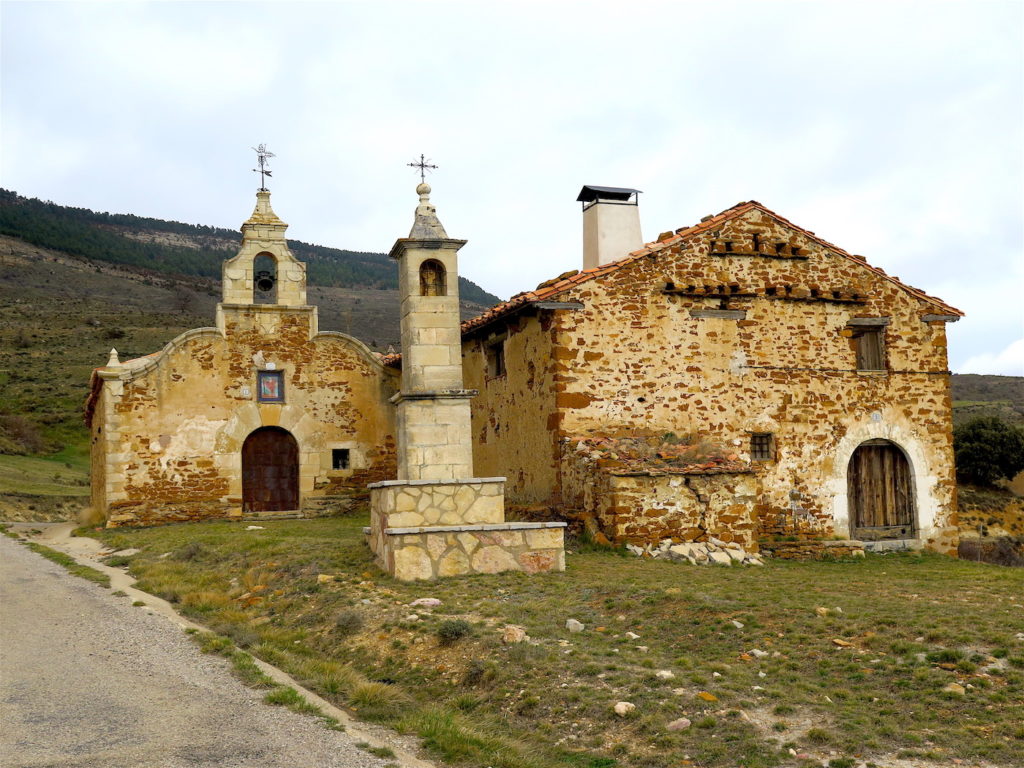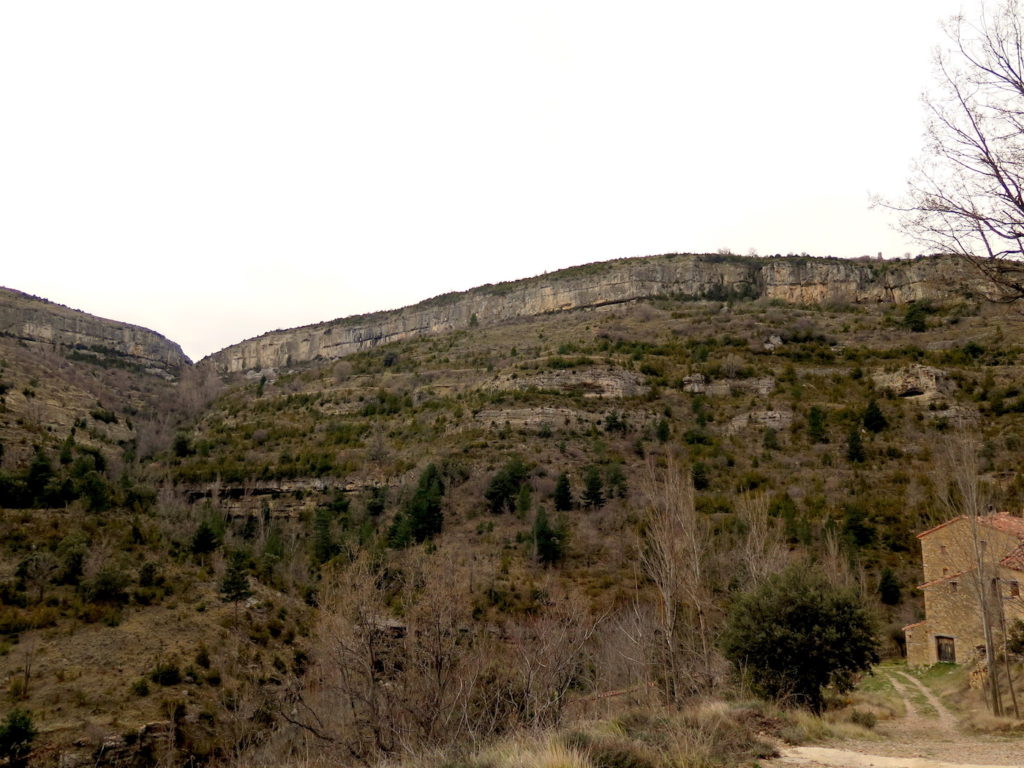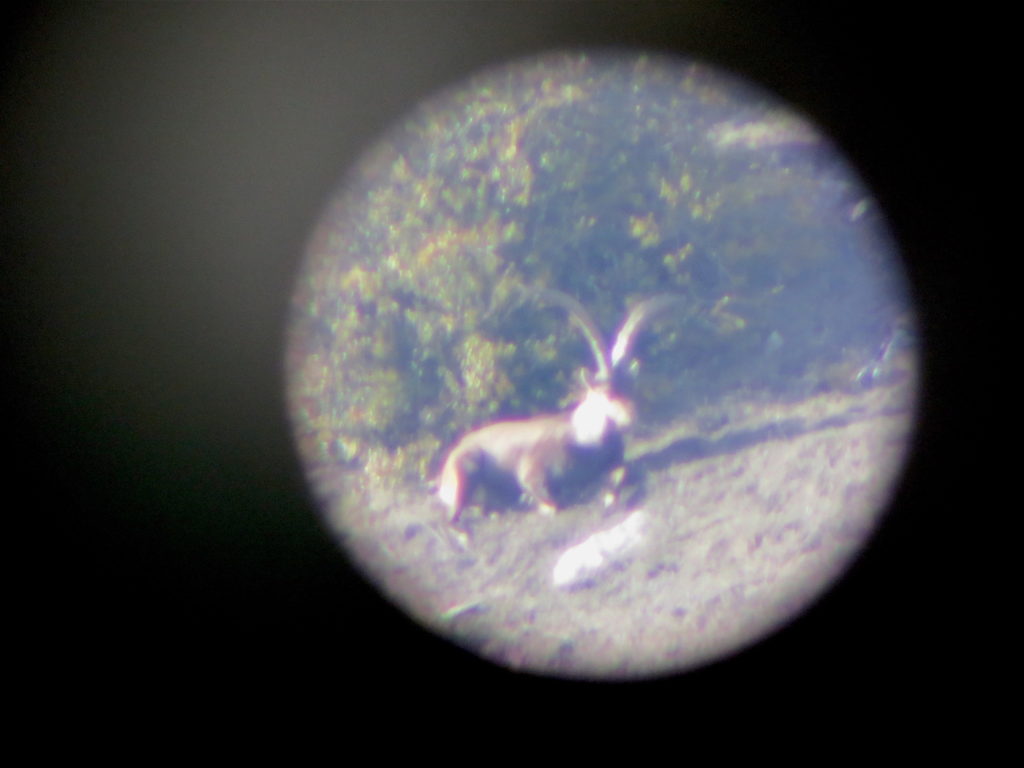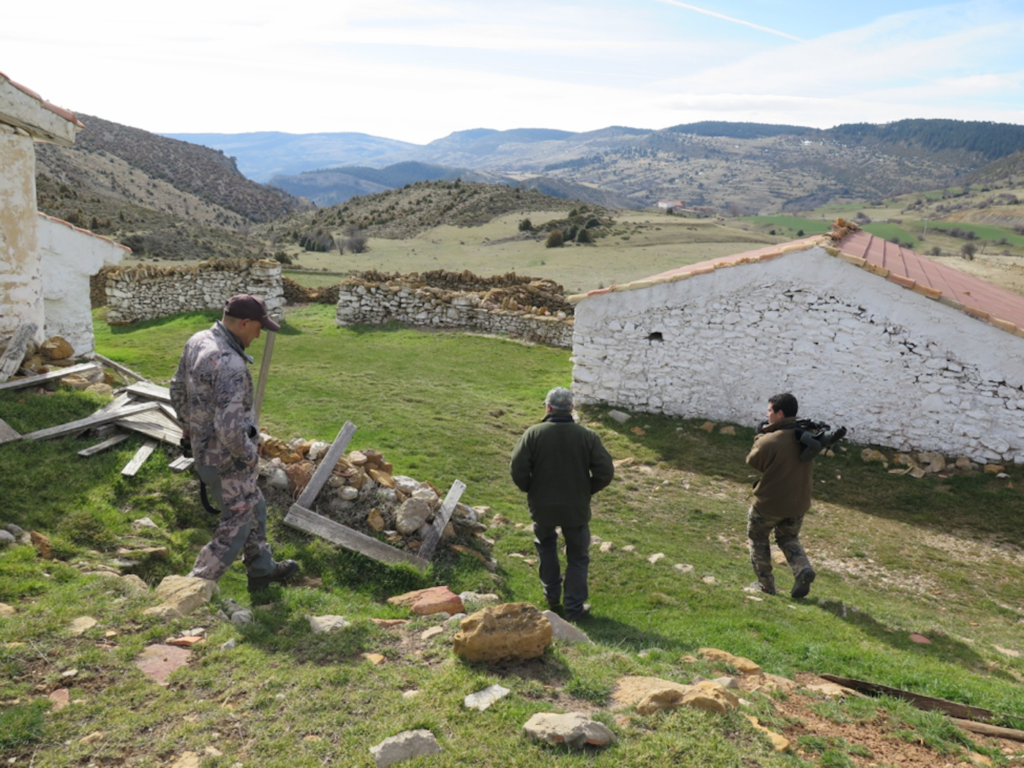For all North American mountain hunters, December marks the beginning of the arduous “blues” season that seems to take forever–lasting until late July–whence the new sheep/goat seasons open in northern climates. However, this is not the case on the Iberian Peninsula, as hunting season for the magnificent Spanish ibex extends well in to April.
One of my markers for gauging a good hunt is the longing to go back and do it again. This was the case for my recent pursuit of a Spanish ibex, as 16 months prior, I was in Spain hunting for European mouflon with my good Spanish pal Valeriano Bellés y Tena (aka Vale) who owns and runs a seamless operation in Spain. (https://www.ibexhuntspain.es/)
After a nine-hour flight across the Atlantic, I arrived in Amsterdam, virtually running to the gate to catch my flight to Barcelona. Little did I remember that on that same day, the two soccer arch-rivals “Barcelona” and “Real Madrid” were set off to display their talents in what the Spaniards refer to as El Clasico! Even though I had a confirmed ticket, I was almost booted out of the plane by the hundreds of passionate soccer fans that were trying to get on the plane to make it to the game. The airbus landed shortly thereafter in Barcelona, where Vale was awaiting me in the queue. We quickly got on the highway, as we had 450 km to cover and I wanted to make sure I could use the last evening hour to fire a couple of shots to test his rifle’s POI.
Once we diverted from the autopista, the usual curvy Spanish secondary roads took over, taking us through orange groves, almond orchards, and olive groves with tiny towns decorating the landscape as we gained altitude towards our little town of Fortanete. This was where we would spend the next few nights. As we arrived at the hotel, Vale turned towards me and said, “I hope you pardon the two-star hotel rating.”
To which my response was, “Let’s concentrate on adding age rings to our billy instead of worrying about the stars on the hotel.”
Even though we were not roughing it, at that very moment, I remembered the timeless quote by the late Elgin Gates who said, “Stirring inside was that intangible but powerful surge of excitement that comes when the hunting grounds have been attained and a coveted trophy is within reach. Love of the chase is an instinctive but irresistible desire without which no man can be a true trophy hunter.”
Now, depending on who you talk to, there are only two genetically separate subspecies of wild ibex roaming the Iberian Peninsula. These would be the Gredos ibex (Capra pyrenaica victoriana) and the Beceite ibex (Capra pyrenaica hispanica). The Southeastern and the Ronda subspecies are regional variations of the latter; their horn and body sizes demonstrating phenotypic plasticity of the genus to the regional weather and food variation.
I was in Spain for the Beceite, which roam several interior mountain ranges starting from Barcelona all the way down to Valencia. As my good friend/mentor Dr. Valerius Geist had once said, “This is the kind of ibex that occupied central Europe during the last inter-glacial age and was replaced during the next glaciation by the Alpine ibex”. This handsome ibex possesses horns with lyre-, airplane-, or curved types, even within the same herd. They are all beautiful in their own account but for yours truly, the palmated airplane form is the king. As always, I was after an old specimen, adhering to my motto of, “Age before size or beauty.”
My hunt was pre-arranged with the fish and game officials in a large area in the Province of Aragon, where a total of eight tags were issued for harvesting a mature billy, and I was given three days to complete my hunt. A wounded billy that is not retrieved rightfully means a punched tag, so one has to be extra diligent in taking the shot to ensure a clean kill.
Right after we dropped our bags at the hotel, we drove out to a remote mountain top and I fired three shots from a prone position out of Vale’s proven .270. The little cloverleaf, two inches above the bullseye at 100 yards, gave me confidence that the rifle was ready for the task. Upon returning to the hotel, Pilar–who is la Dueña de la casa–had cooked up a storm, serving us lamb chops, sautéed wild mushrooms, and potatoes, all washed down with a jarra of Rioja wine. Sleep could not have come faster, as I had been fighting my jet lag all along in order to acclimatize quickly for this hunt.
Morrow arrived and with a double shot of Spanish café and tostadas, we were road-bound to pick up the game warden and his son to accompany us on this hunt. After all, his discretion in taking the right animal is monumental for proper management of the herds in the area. After introductions, I got to like them both, joking and conversing with them in Castilian Spanish.
The subject quickly turned in to El Macho, and the warden’s son showed me a picture of a group of ibex he had photographed in the fall, with one ancient billy amongst them. I liked what I saw and asked if we could go to that same area to look for them. They agreed, and in 45 minutes we found a spot to park the truck and get on with the business of glassing the hillside, that was just beginning to come alive with the sun’s rays. There were patches of snow from a late storm the week prior, and the glassing was difficult because of the earthy colors common on the ibex coat. Finally, after about an hour and a half, we spotted a group of eight billies that were feeding half way up the mountainside.
A closer examination through the 60x Swarovski spotting scope revealed the horns of an old billy; perhaps the same one we had seen in pictures. The wind was in their favor, and they were all alert, looking in every possible direction for incoming danger. Right about this time, Vale said, “This time of year, my friend, you hunt the ibex with your ass and not your legs.” What he was referring to was that one needs patience and must allow the game to settle down before making a move.
Right above the ibex, some 400 yards up, there was a conifer forest of pines and junipers, and we knew that the slightest suspicion of danger would push them in to the forest and bust the stalk. We found a suitable spot next to an abandoned farmhouse, made out of stone and away from the wind, and decided to wait them out.
At this point, a little history is perhaps in order about this place. The area referred to as Maestrazgo is a large natural mountainous area that borders the three provinces of Aragon, Castellon, and Valencia. The district was under military control following the 12th century Christian re-conquest of the area from the Moors. Remains of the stone walls–bancales–built by the Moors decorate the landscape to present day. It also had a significant role in the 19th century Carlist wars, and finally, the 20th century Spanish civil war. After many years of decline, the area is now undergoing revitalization, helped by funding from the EU and the Spanish tourism bureau. For a detailed account of the Spanish civil war (la guerra civil) in this area, I recommend the movie, “Land and Freedom.”
Back to our hunt. For the next four hours, the group of ibex fed, laid down, played, sparred, and enjoyed each other’s company, and around noon, they all decided to take a nap. They were all lying down, some of them even with their heads on the ground in a sideways manner, but each looking in a different direction to alarm the group in case of approaching danger. We opened our little lunch sack and gnawed on homemade bread and a few slices of homemade chorizo, accompanied by sips of homemade red wine out of a bota.
To be in harmony with my quarry, I also decided to stretch out on the grass and take a nap. Around 1:30 pm, we looked through the scope and noticed that the ibex were still napping. Just to kill some time while they made their first move, I asked Vale to see if we could drive around the mountain, leave the truck, and hike up to the small cliff above them to have a peek and see if I could manage a shot from above. He agreed.
At 3:30 pm, we had made the climb and looked through a sliver of an opening for the ibex. We only saw one, and luckily it was the old billy I was after. The distance was 310 yards–not far for a relaxed shot–but the angle was steep, and my visible shooting target was only his neck, as he was still lying down. Even when he stood up to change positions, his vitals were blocked by a small tree, making for a risky shot. After much deliberation, I passed up the shot and we decided to go back down for a possible stalk in the early evening hours.
By the time we made it back to our original position where the game warden was holding post, the animals had gotten up and moved 400 yards lower than where we saw them first. Now, with the early evening breeze in our favor and a large rock band to our right, we had enough cover to make a stalk. We slowly and carefully inched our way towards them, and from a small knoll, I peeked over. To my dismay, they had sensed something and were on a slow trot up the rock band. From the group of eight, only three remained in sight and at this point, the good Lord once again showed me favor as the old billy was amongst the remaining three. The rangefinder read 220 yards, but they looked farther due to the slope and the dim light.
I gathered my nerves, and with both eyes open, sent the supersonic 130-grain spitzer towards his chest. The whop of the bullet hitting flesh raised my spirits, and the animals all broke into a frantic stampede, climbing quickly and disappearing in the pine forest above. We gave it a few minutes and started climbing towards where they stood. Just above the ledge, my trophy–which at that point I named “El Macho de Maestrazgo”–was lying stone dead. Hugs and high fives gave way to a short prayer session–a toast to my old man and uncle, who I am sure saw it all from heaven–and of course several pictures with El Macho.
Because the chief game warden had to inspect the trophy before being released to the hunter, and because the department of fish and game requires samples of blood, pancreas, hair and testicles from the specimen, it was in our best interest not to open or cape him and just bring him down whole. Grabbing him by his horns, we dragged him from ledge to ledge and down to the trail, so we could ask the landowners’ permission to drive our truck inside and climb on the trail to pick him up.
Shortly after, we arrived in town and the chief warden showed up to measure him and validated his age and trophy status at 11 years old. We then caped him, packed his cape and horns to freeze, and I donated all the meat–sans tenderloins–to the local hunting club members, as I had no means of bringing it back home.
Those tenderloins, in the capable hands of Pilar, were sautéed quickly in wine and garlic, and we had a royal celebratory feast that night at the hotel. Polero and a shot of licor de manzana verde were all I needed for a good night of rest after a long day of hunting.
The following day, rain arrived, and I felt extremely blessed to have sealed the deal and connected with my trophy on day two. We had time at our disposal and drove around and hiked to look at more ibex. The countryside was simply magnificent, and my pal Vale showed his vast knowledge of Spanish history and culture, interjecting frequently to enlighten me about the history of the area, its customs, and its wars. As the late Spanish writer Federico Garcia Lorca once said, “In Spain, the dead are more alive than in any other country in the world.” I can firmly say that I enjoyed the cultural and gastronomic experiences and the historical tales as much as I enjoyed stalking and harvesting my billy
By mid-afternoon, we packed our bags, loaded the cape and horns of El Macho in the back of the truck, and slowly descended the windy roads down to the autopista. The sight of thousand-year-old olive trees (olivos milenarios), which are now protected, through the truck’s window, and the charming villages of small-town Spain, are etched in my memory for ever.
As I wake up with dreams of palmated horns and write these lines, I think about how blessed and fortunate I have been to stay out of harm’s way all these years, and to have experienced some of the most wonderful times any hunter can experience in North America and other parts of the world, and I certainly hope I am blessed to see more.







